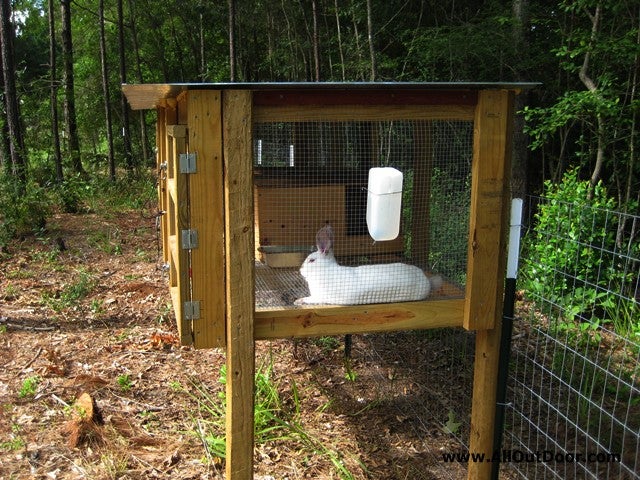Preppers – Are Rabbits Worth the Trouble?
Kevin Felts 12.08.16

Rabbits have always been a popular topic with preppers. What is there not to like about them? They are cute, soft, fun to watch, easy to raise, reproduce like crazy, and go with a variety of recipes.
I have kept rabbits twice. First time was in the late 1980s and more recently from 2013-2015. Both times I kept asking myself, “Why do I have them”? Which makes me ask, is keeping rabbits everything it is cracked up to be?
Before we begin let’s define some terms:
Buck – Male
Doe – Female
Kit – Baby, short for kitten.

Advantages
Rabbits do not take up a lot of room unlike sheep, goats, pigs, cattle, or chickens. For the most part rabbits are content to live in a cage around 30 inches long or so, depending on breed and size.
They reproduce like crazy. The doe has a cycle that runs like a clock.
Rabbit manure is excellent fertilizer. Great for growing all kinds of stuff in your backyard garden. I have heard of people putting rabbit manure straight on their tomato plants.
Can be used in school projects, such as Future Farmers of America (FFA). This teaches children animal husbandry and the responsibility of taking care of an animal.
The meat is an excellent source of low fat protein. A domesticated rabbit should be enough to make a family sized soup or stew.
They do not make noise, which is nice for urban dwellers. Your neighbors will never know you have them.
Disadvantages
Prone to mosquito-borne diseases.
Must be kept in a cage. If let loose they may run away and killed by birds of prey or dogs.
May eat their kits. I had a doe that ate every kit she had. After about three litters of her doing this, I butchered her.
Can not tolerate extreme heat. Cages should be kept out of direct sunlight.
Rabbit urine has a strong smell, so cages must be in a ventilated area. If kept in a building or shed, provide ventilation. In the 1980s my rabbits were kept under a lean-to on the side of a shed. The second set were kept under a shade tree.
They drink a lot of water. For their size, rabbits can go through some water.
Require processed rabbit feed. Unlike a wild rabbit, a domesticated rabbit depends on its owner to provide food. Getting grass off your lawn does not provide the rabbit with all of its required nutrients.
Unlike goats and sheep that can provide milk and chickens that provide eggs, rabbits provide nothing of the sort.
Easy to get emotionally attached, which makes butchering difficult.
Wild or Tame Rabbits
After I built my chicken yard in 2014, I noticed an increase in the wild rabbit population. Rather than using chicken wire, I used field fence. The chicken yard is around a 1/2 acre and has a brush pile in it for rabbits.
A few months after the yard was built, I noticed wild rabbits were going in and out through the wire.
In 2015 I noticed a significant increase in the number of wild rabbits around the chicken yard. It appeared they were using the chicken yard and the protection it provided from dogs.
Why was I keeping domesticated rabbits when I could manage the local wild rabbit population by providing a safe haven?
Rabbits Have Their Place
Raising rabbits has a place in prepping and for backyard homesteaders. For urban dwellers, they are probably the easiest livestock animals to raise.
However, too many people buy rabbits and then lose interest. Believe it or not, a lot of them end up at animal shelters. If someone is not ready for the responsibility, please do not buy an animal.